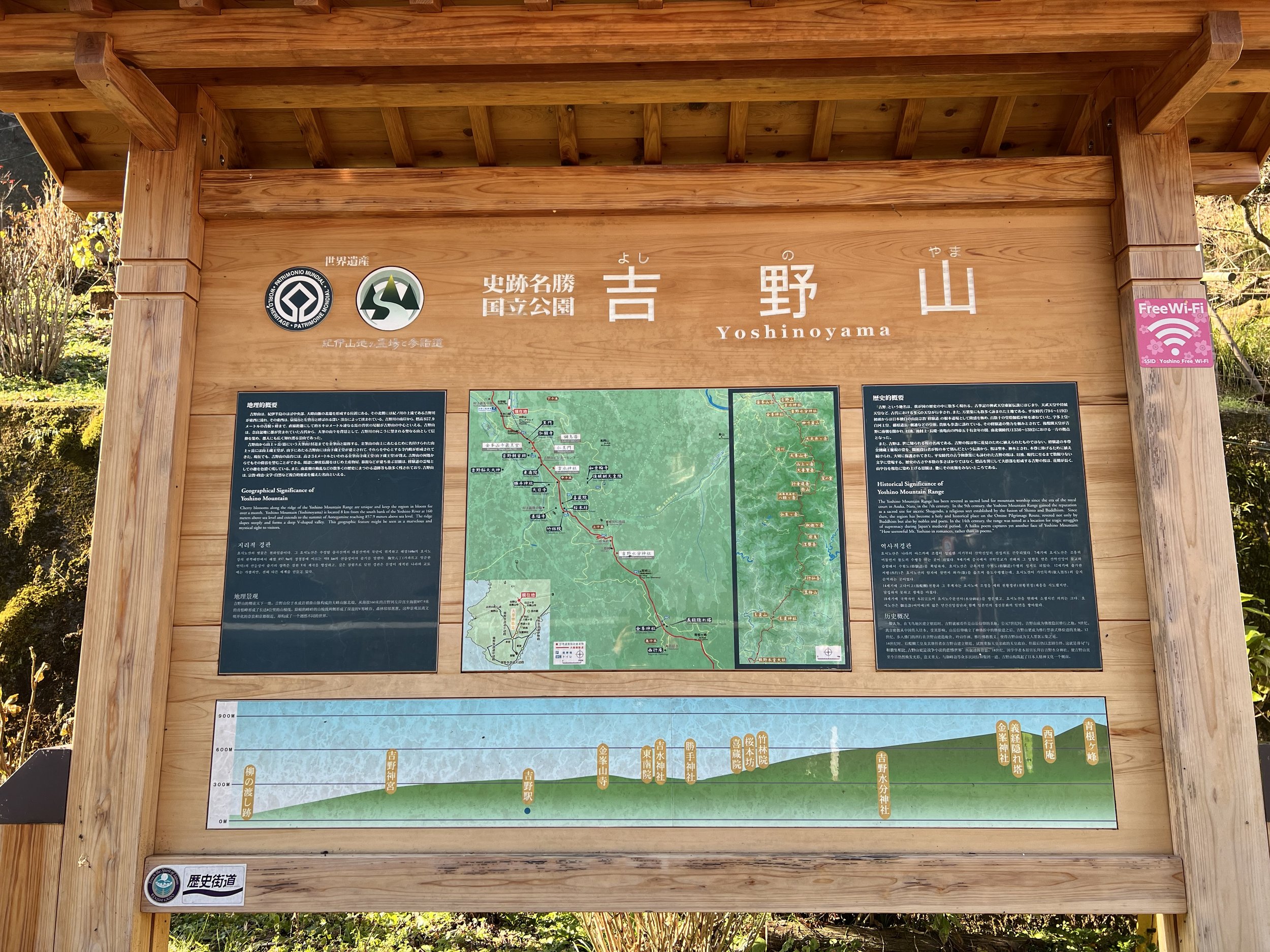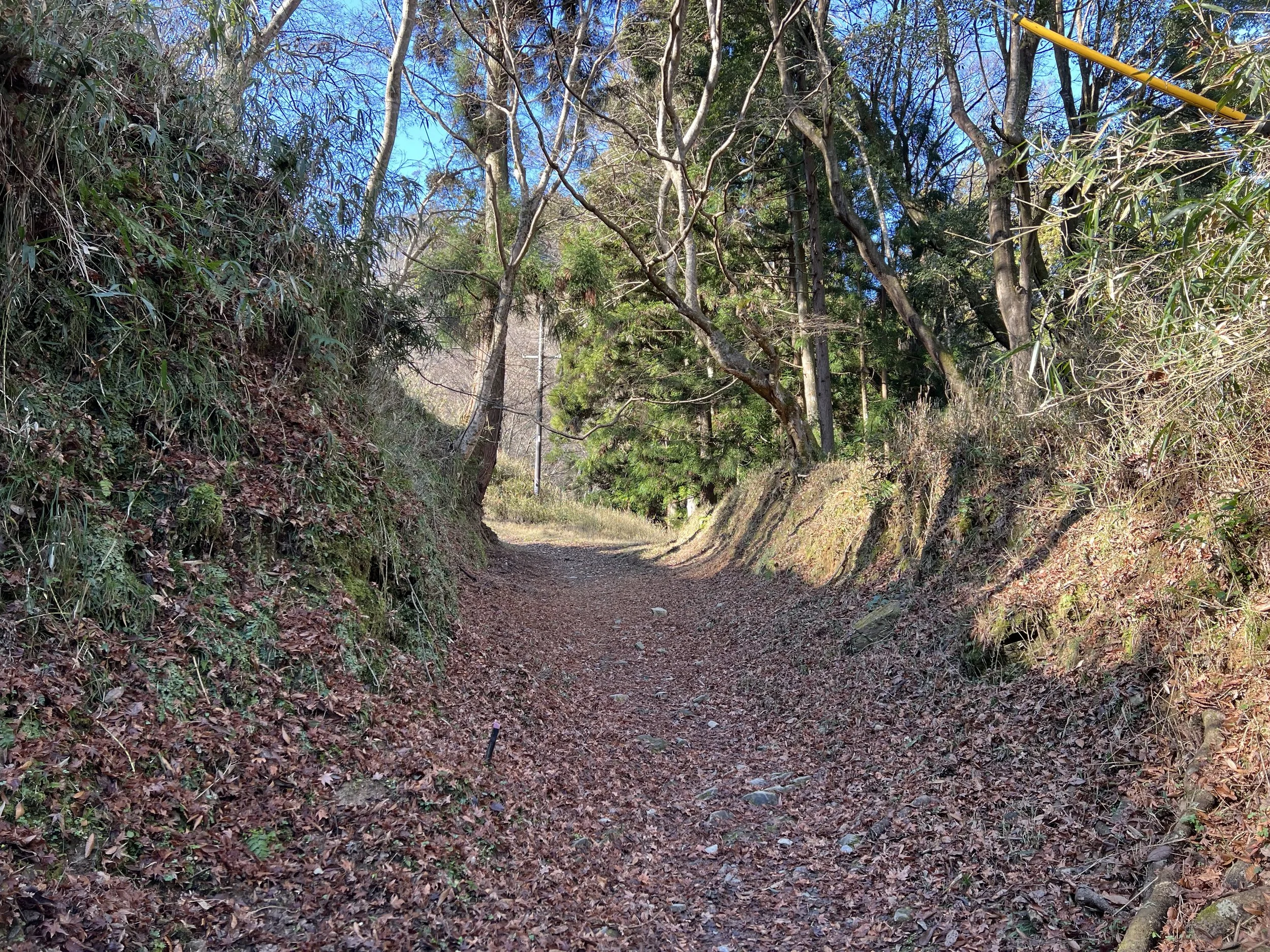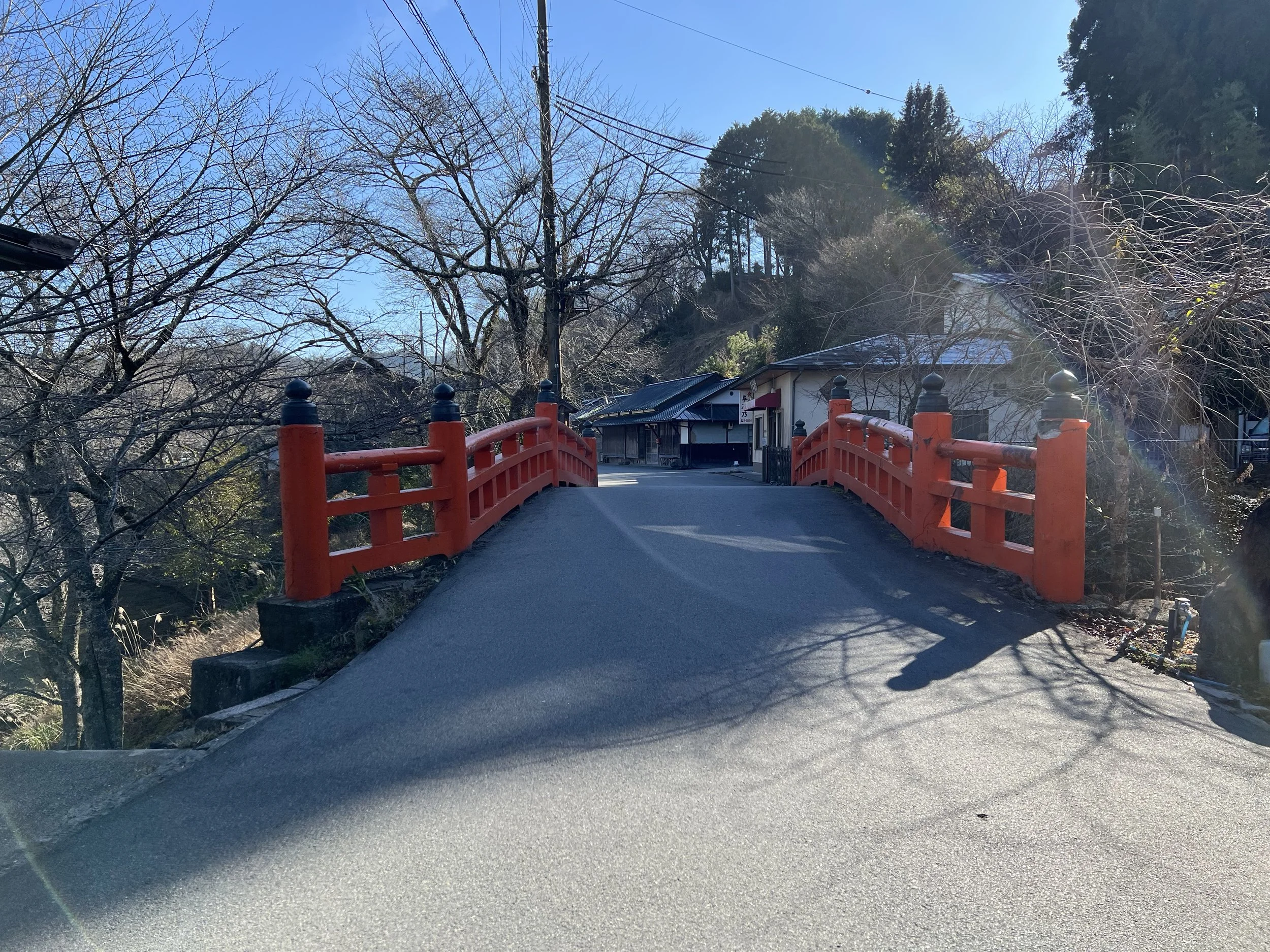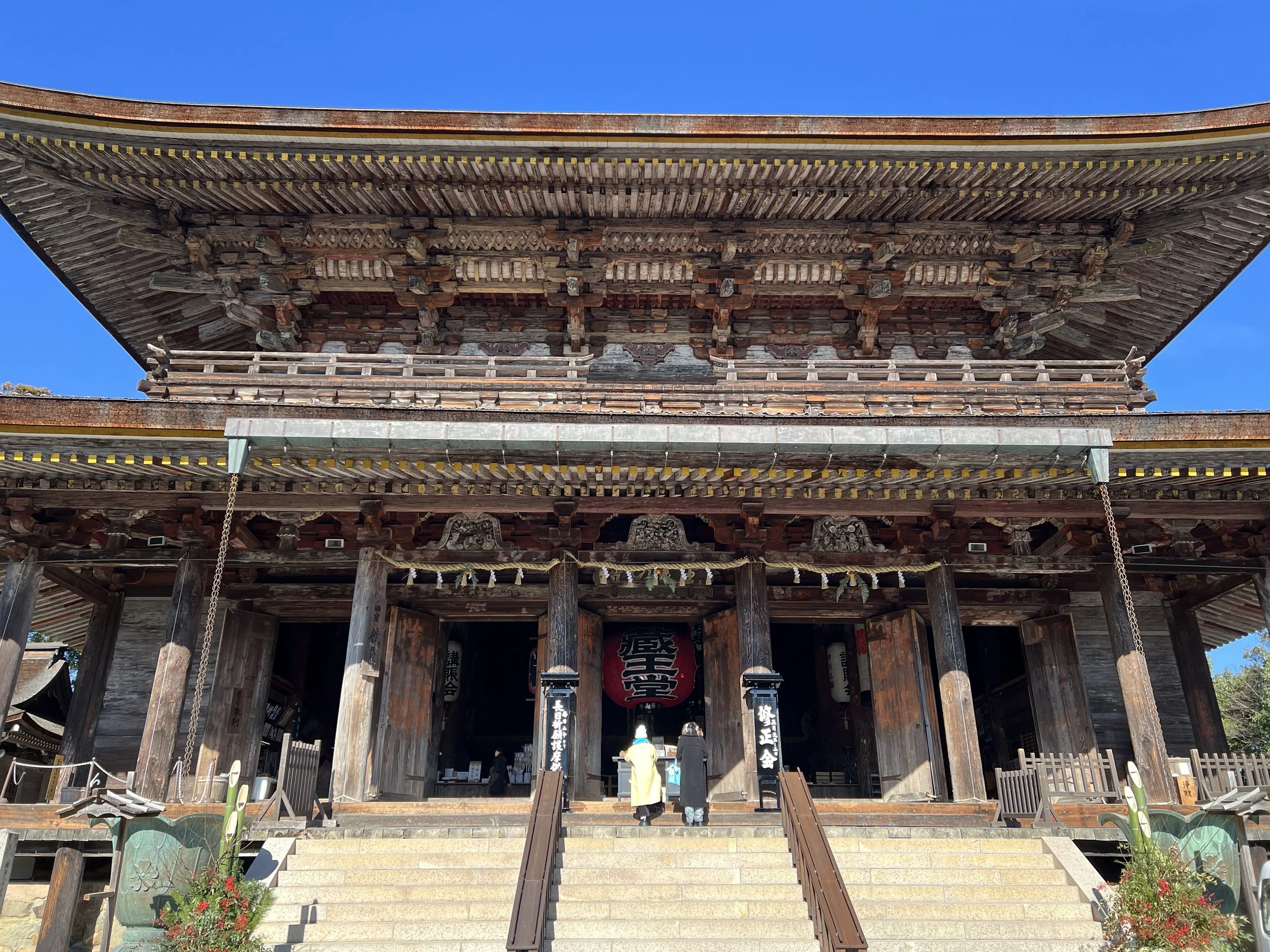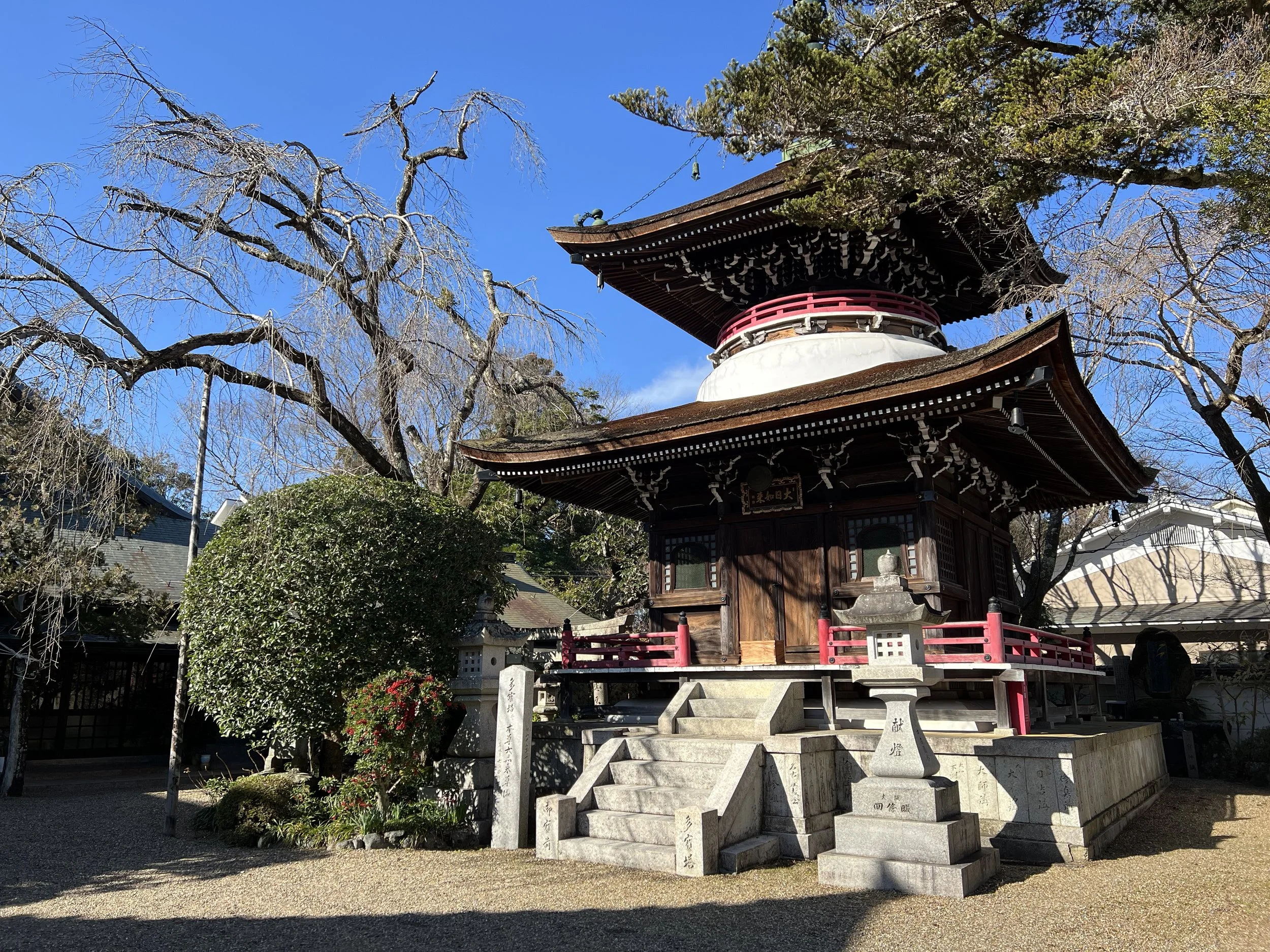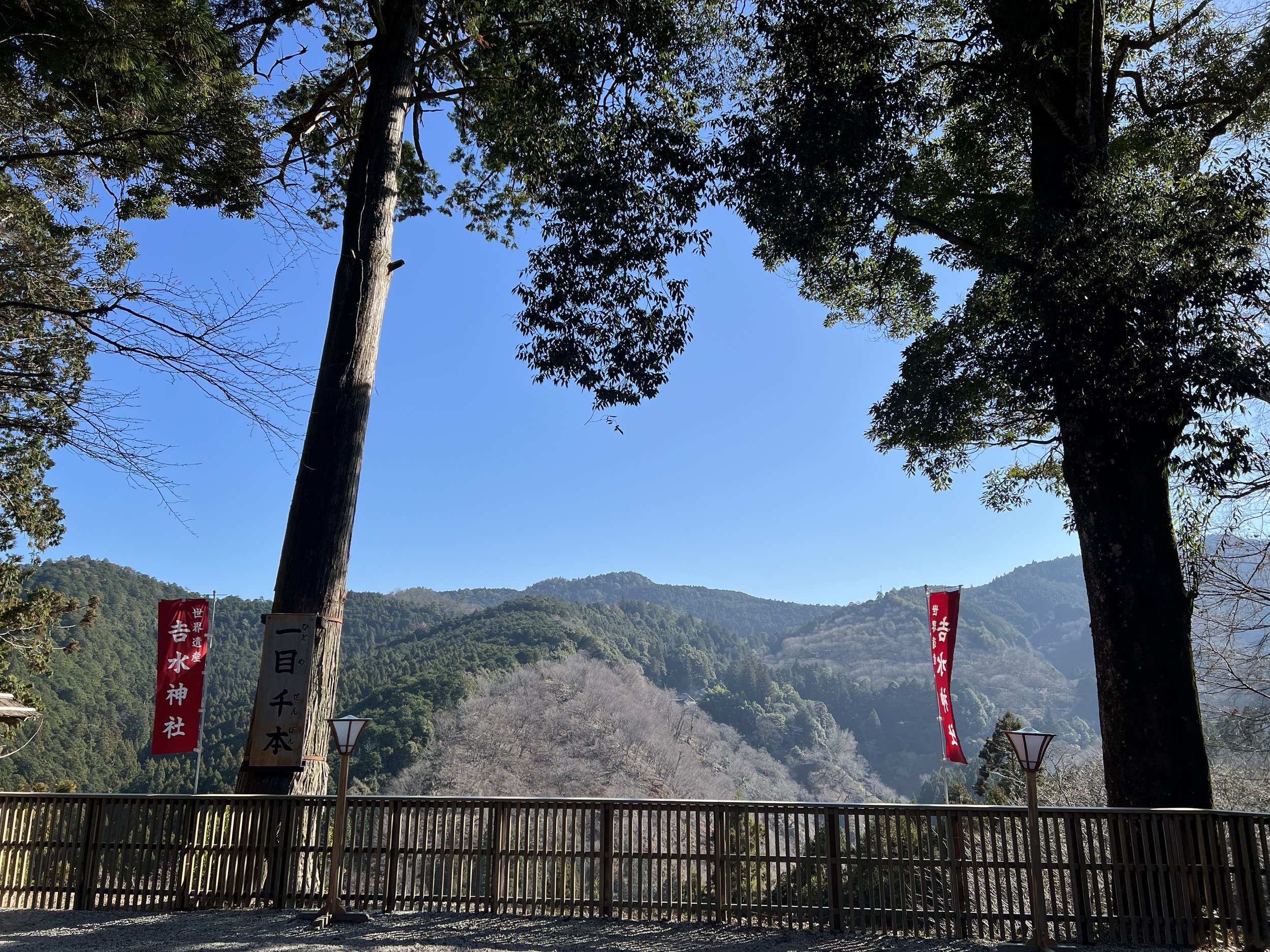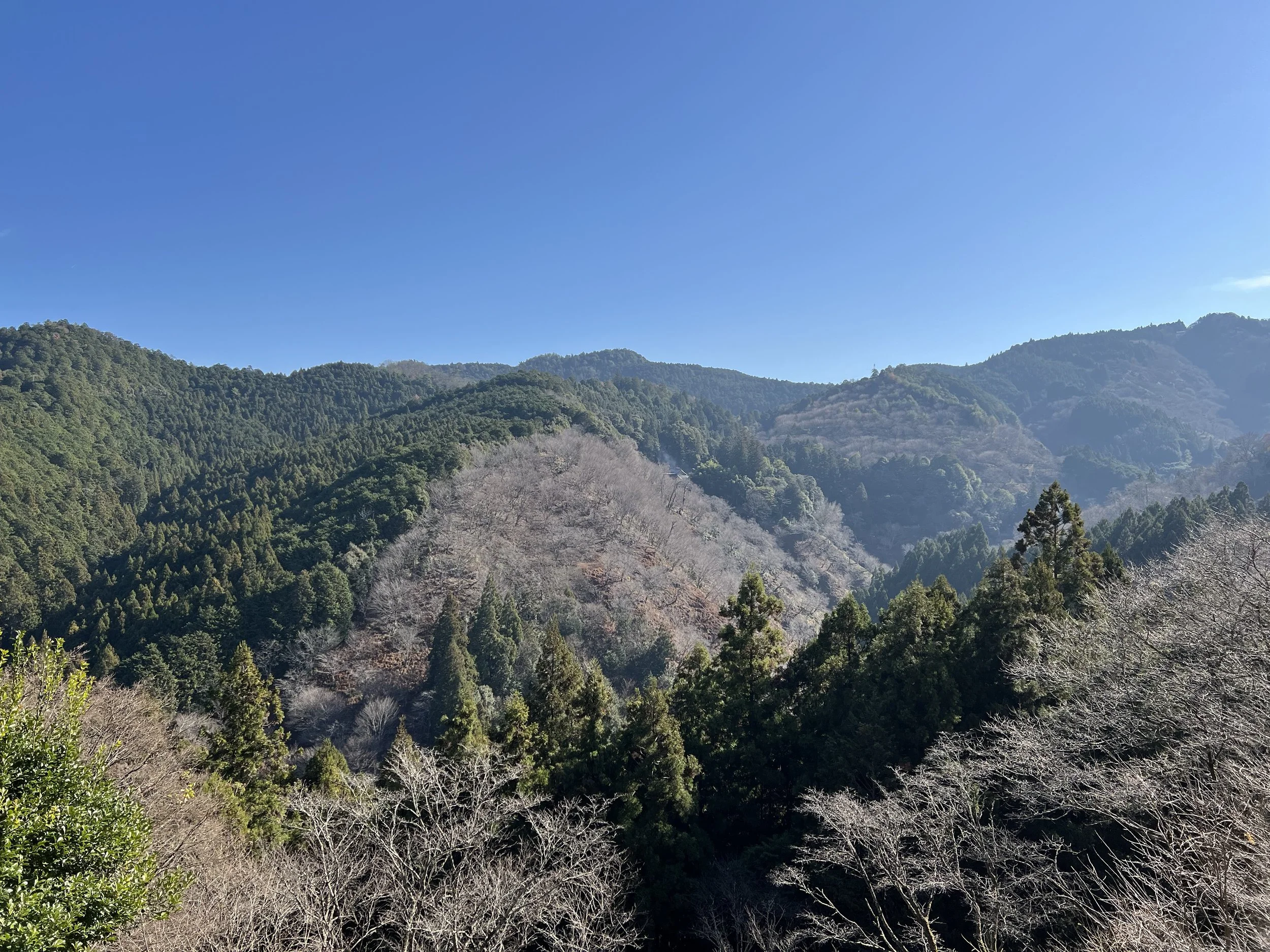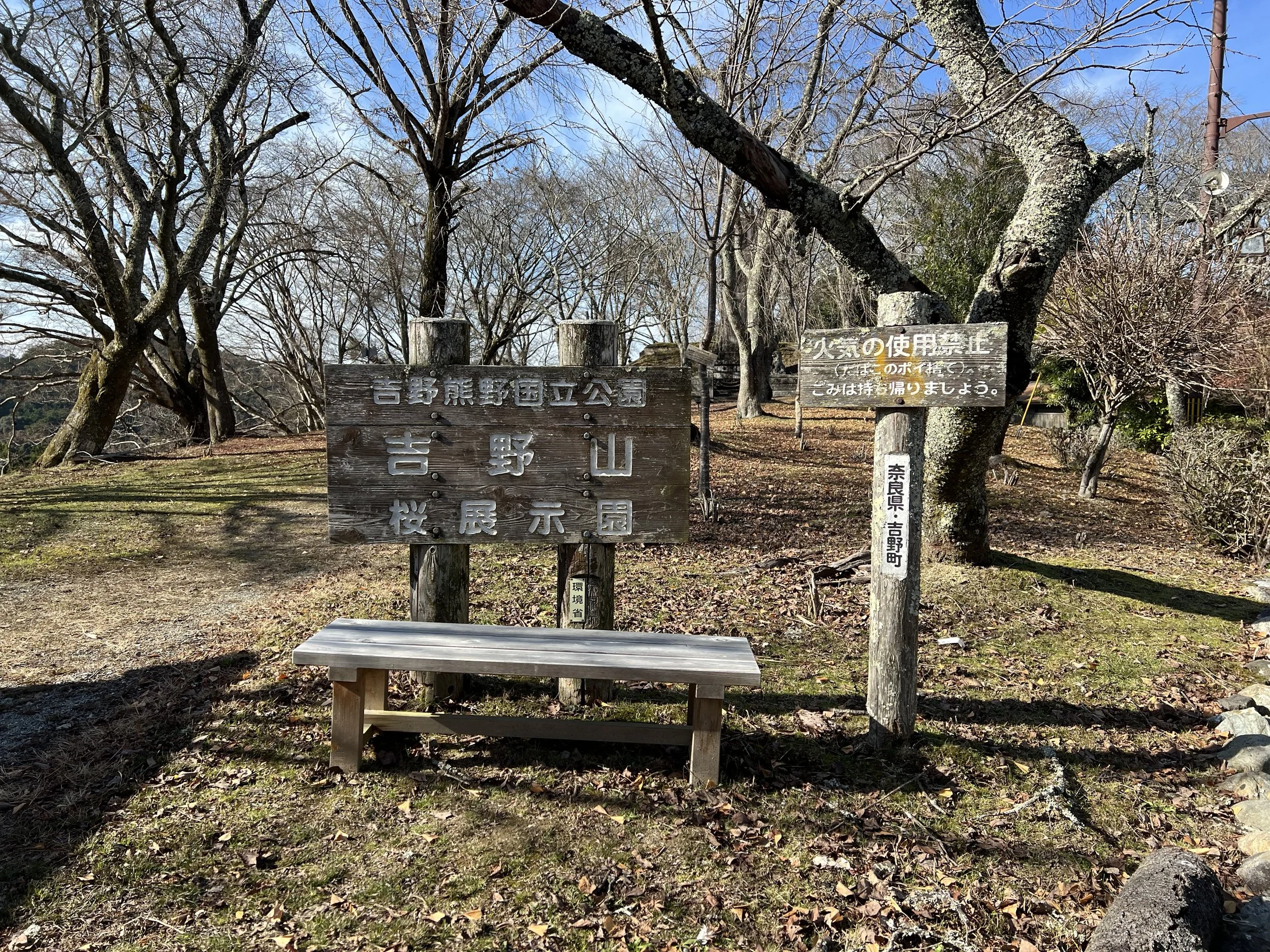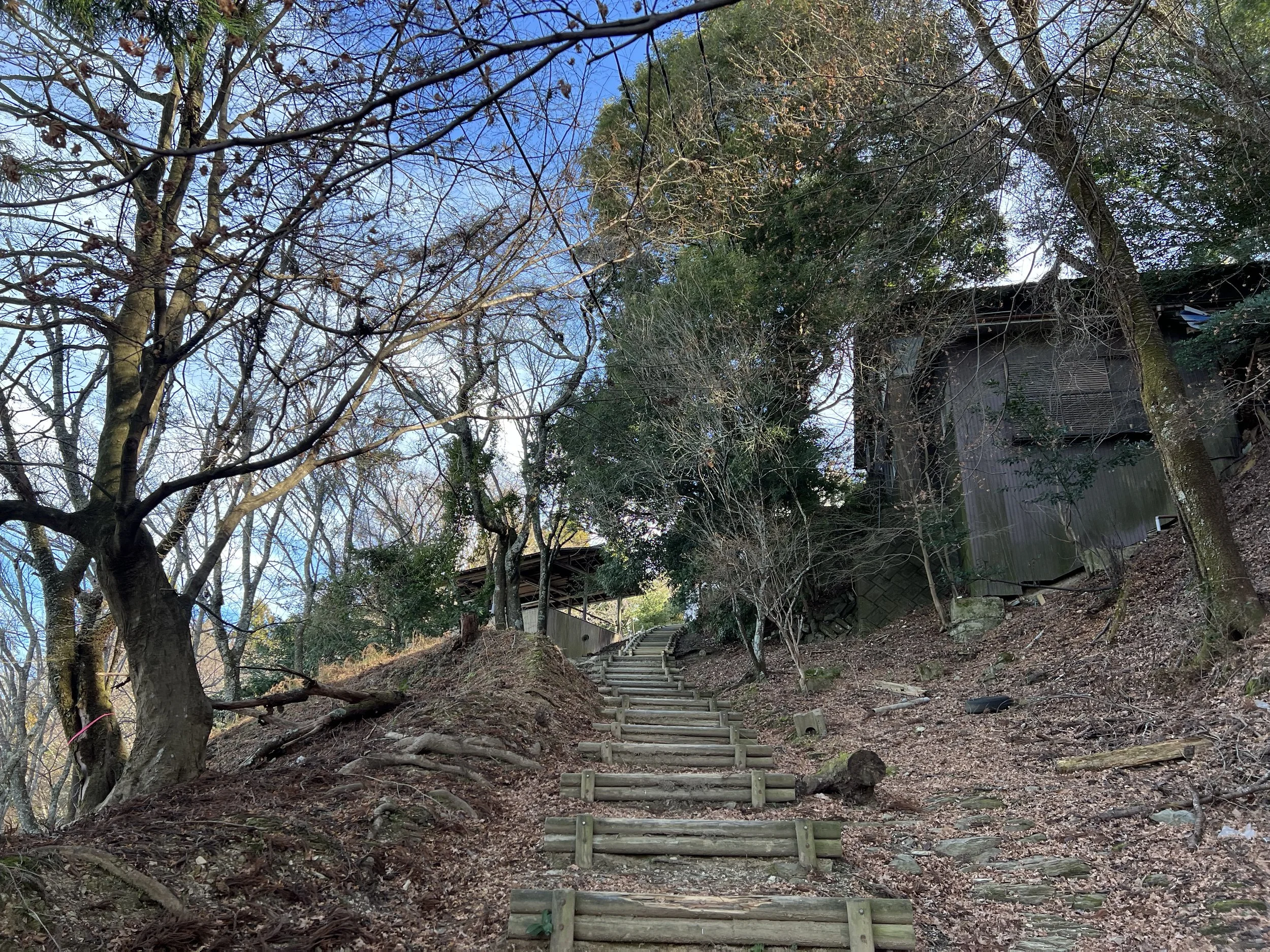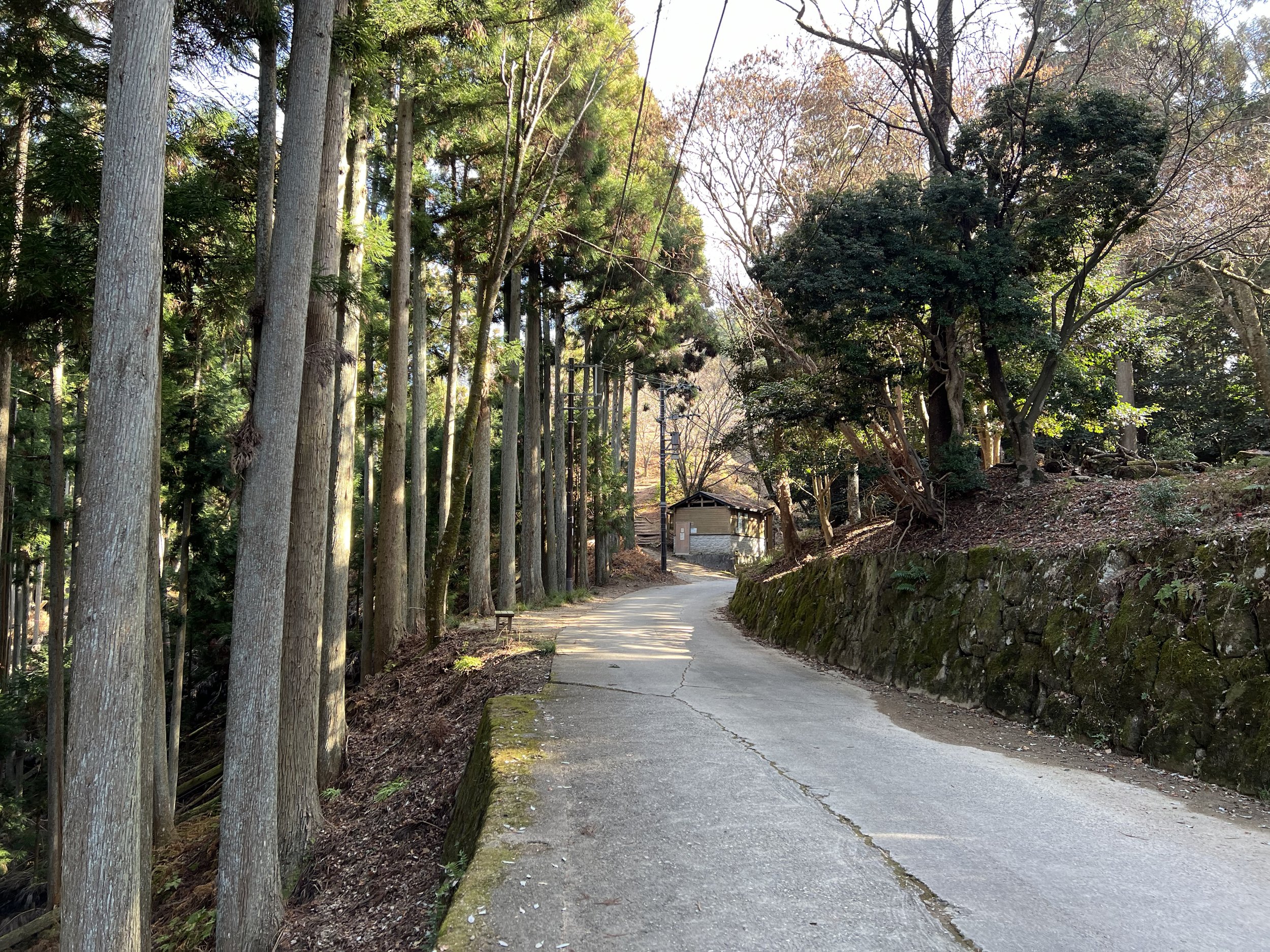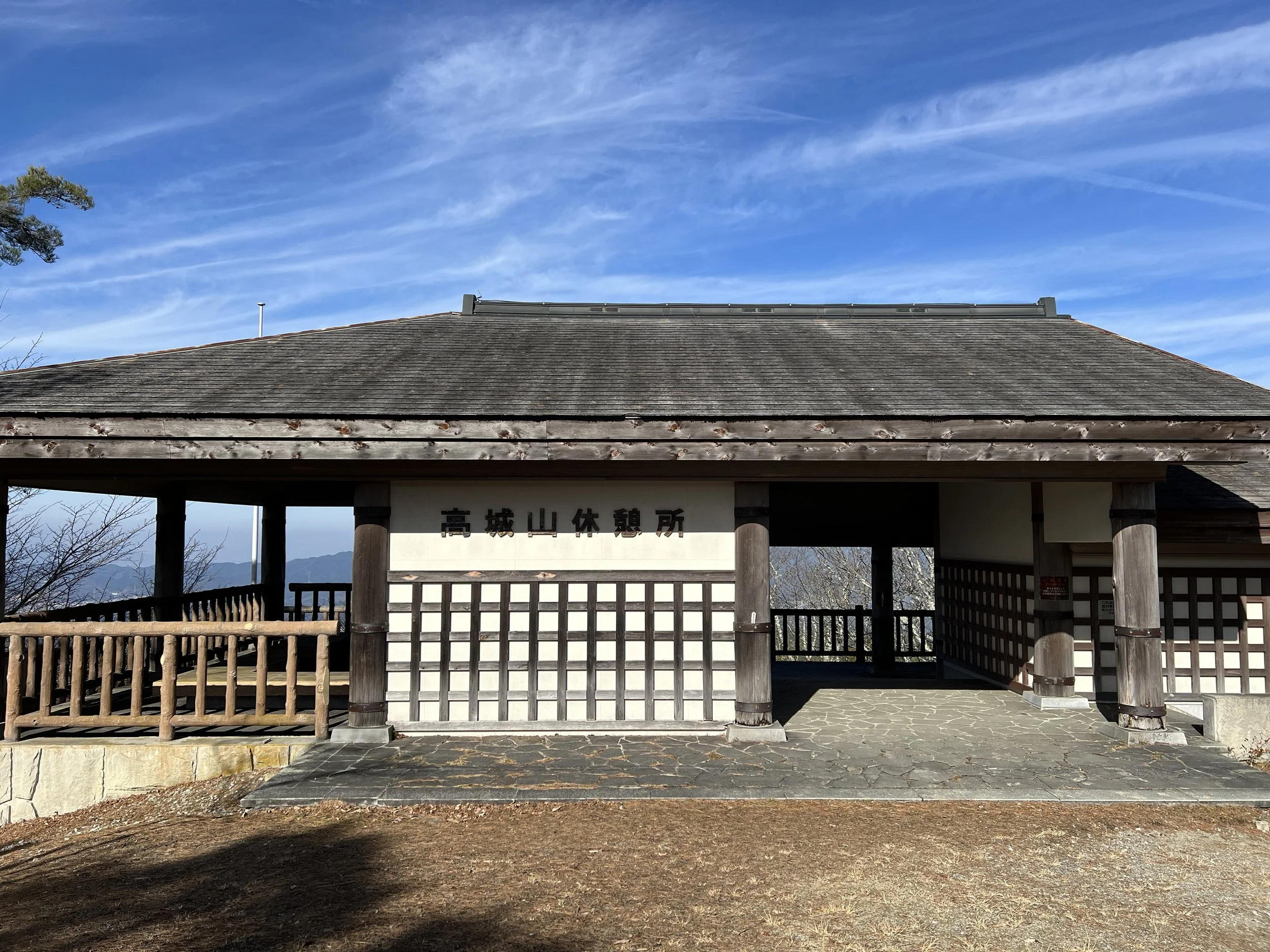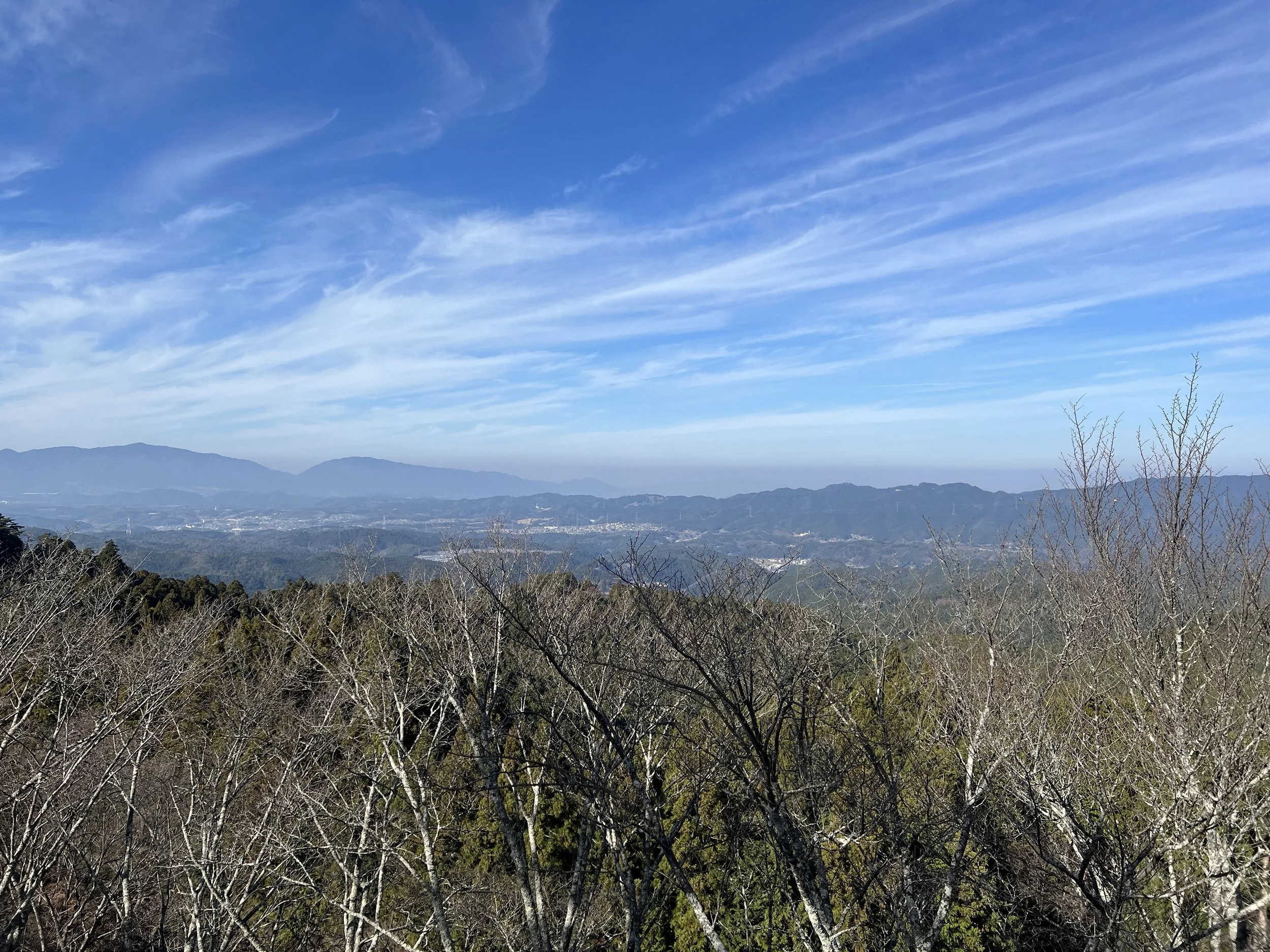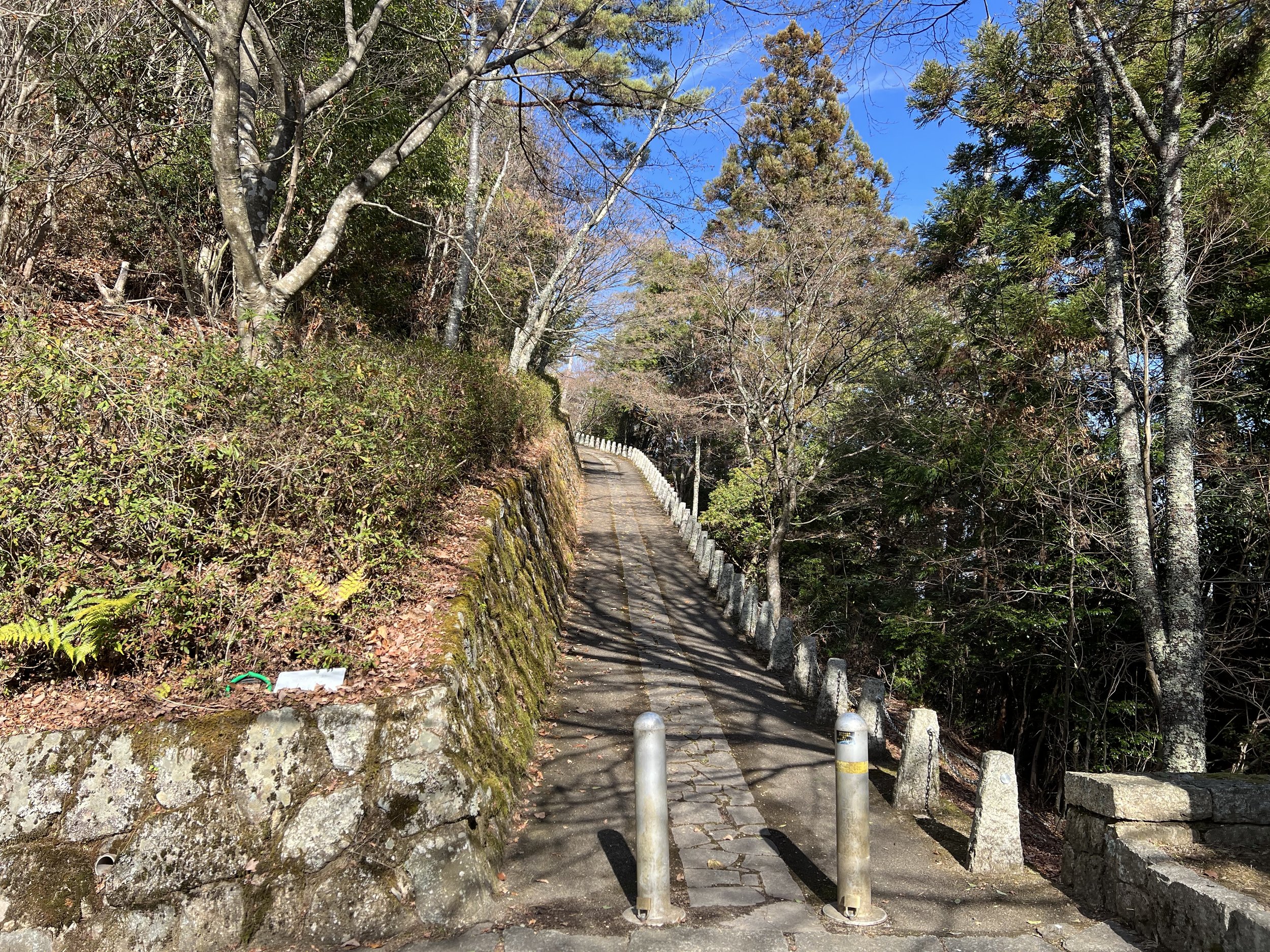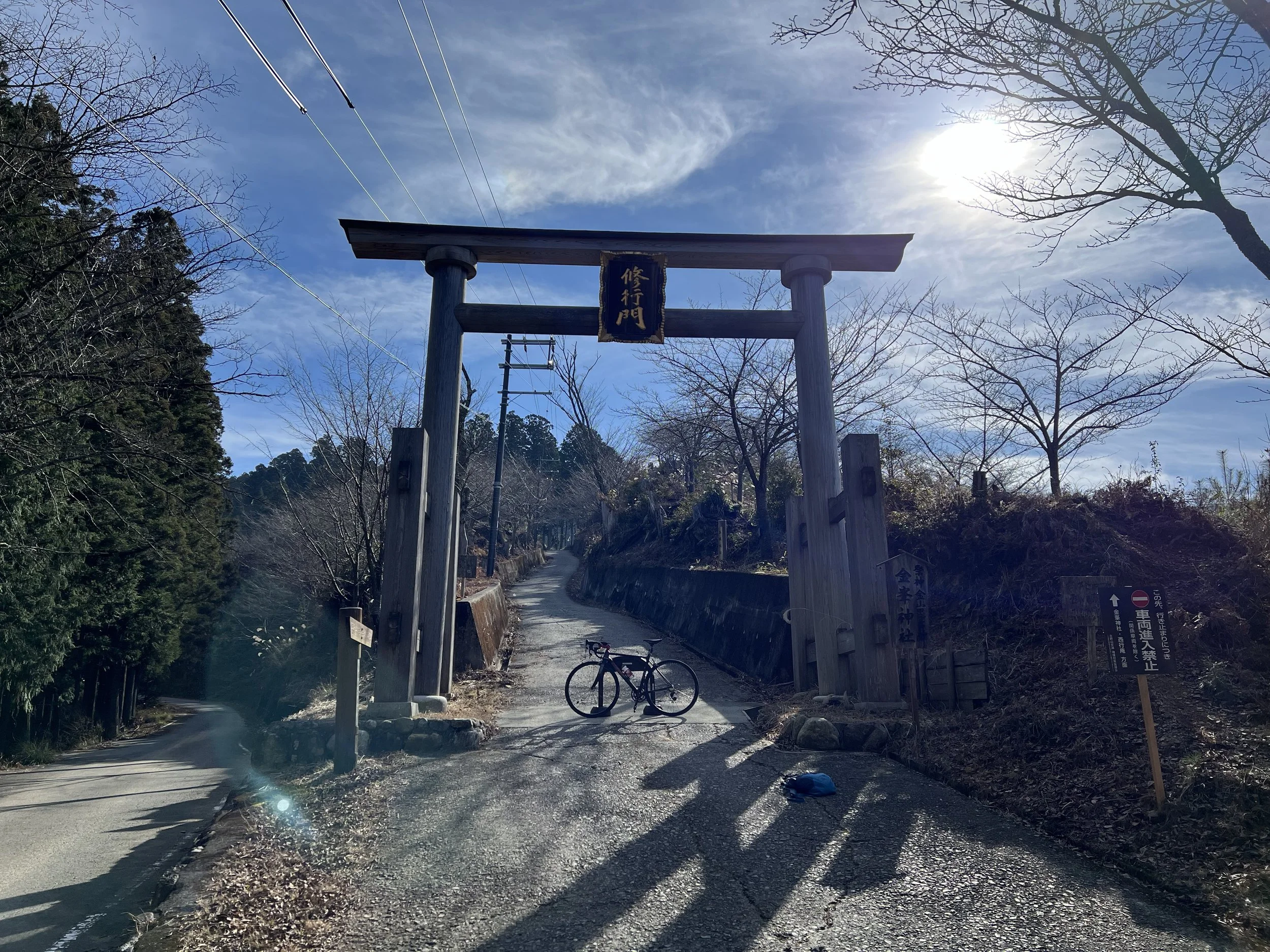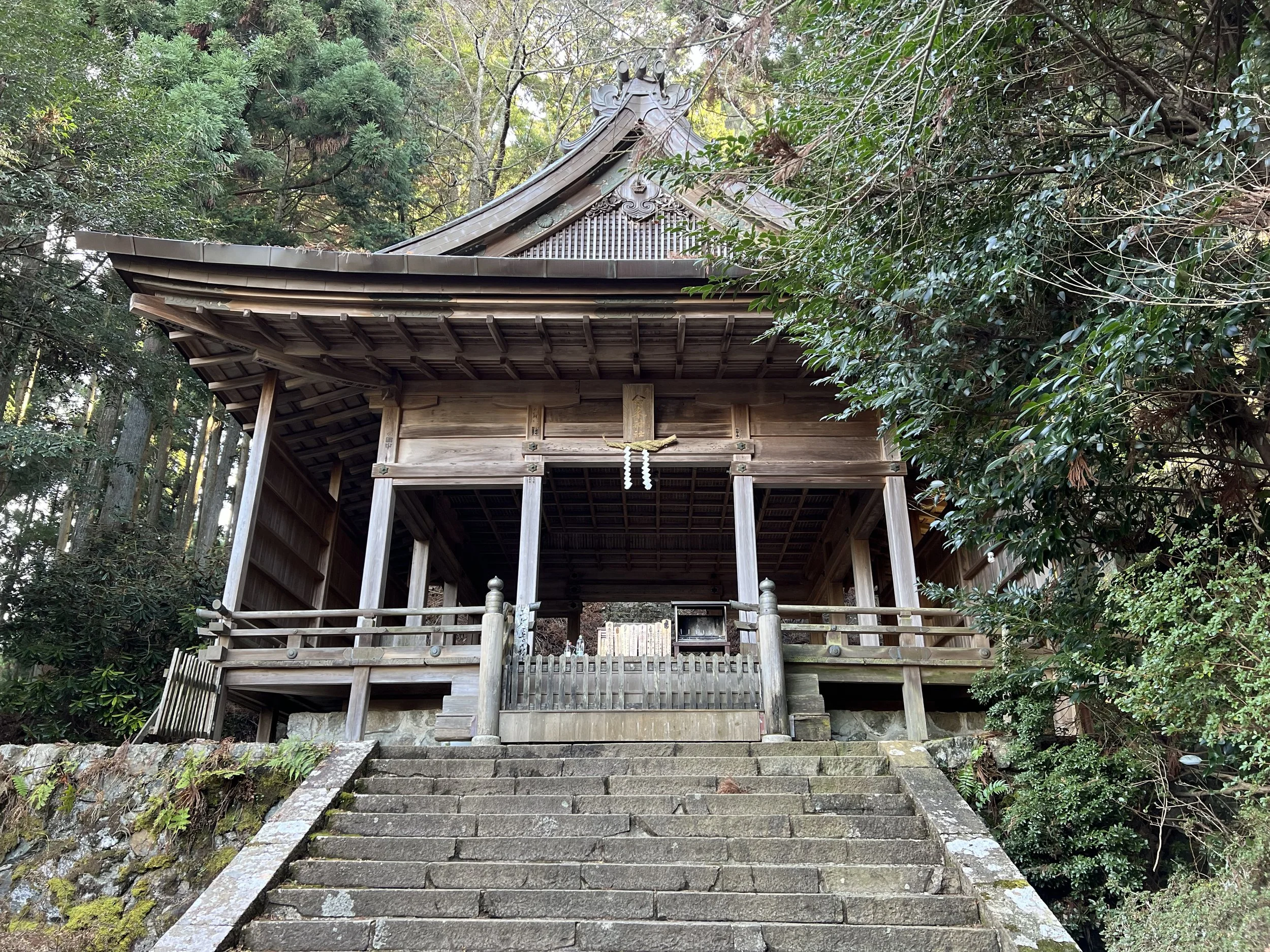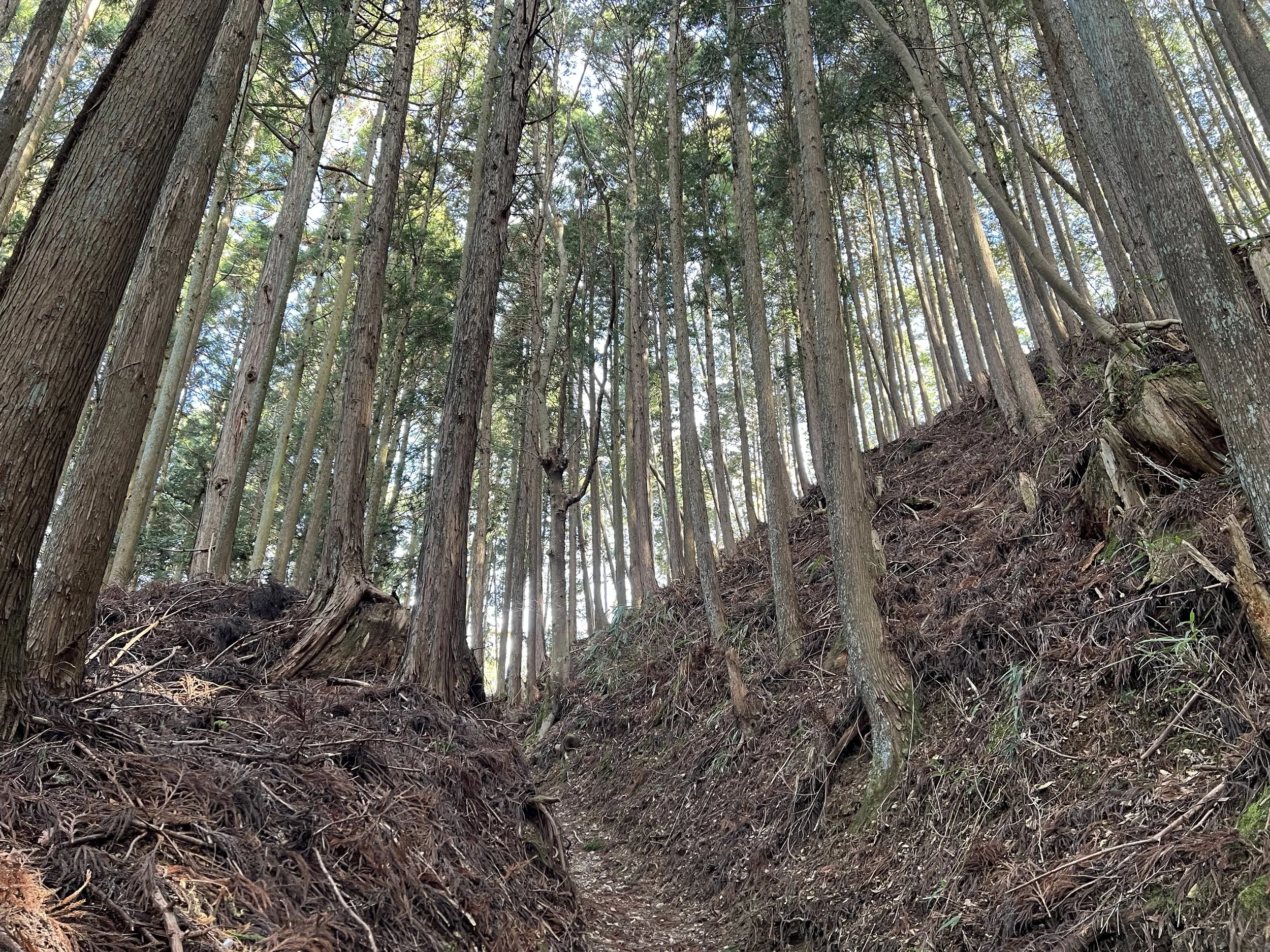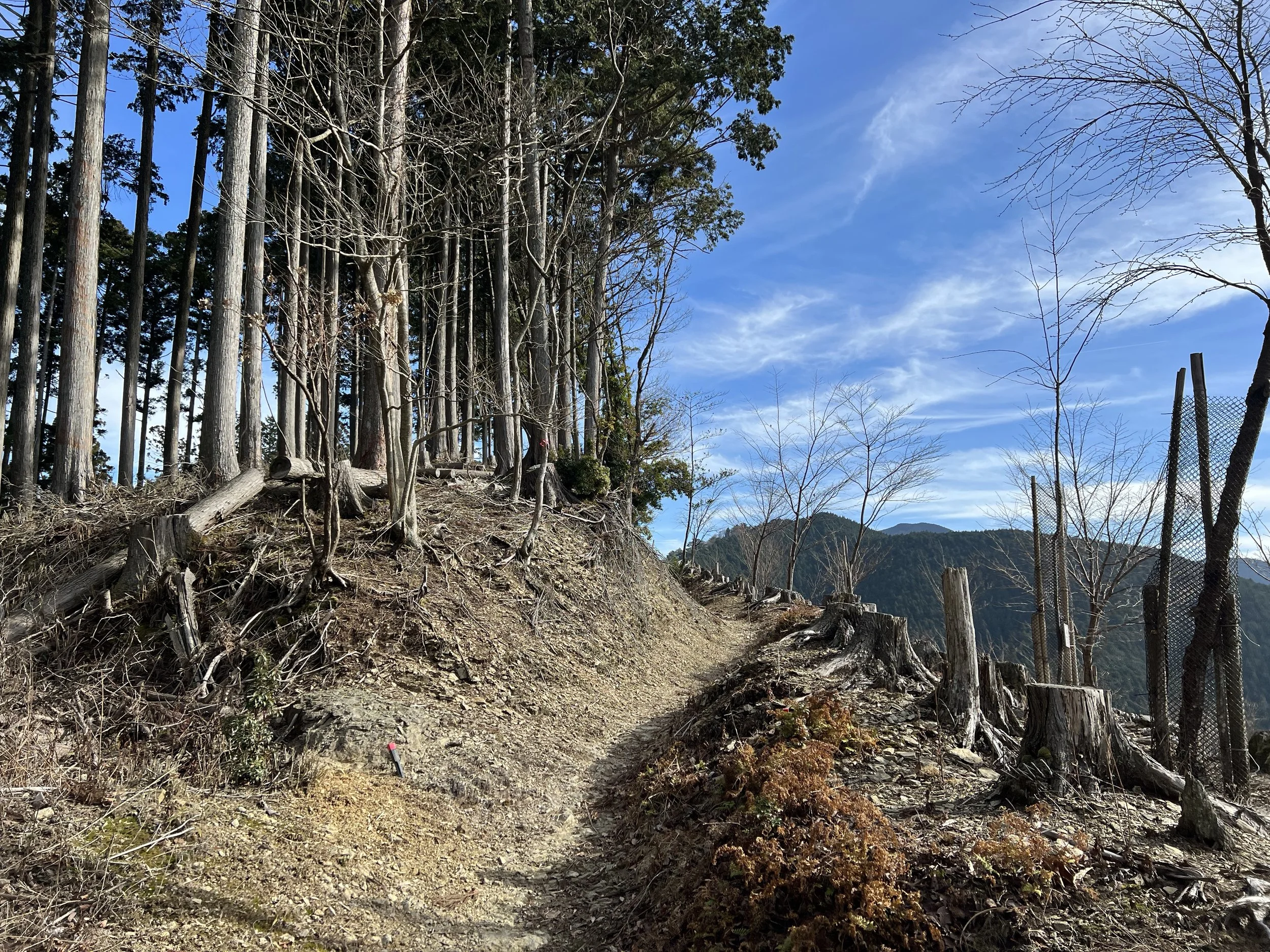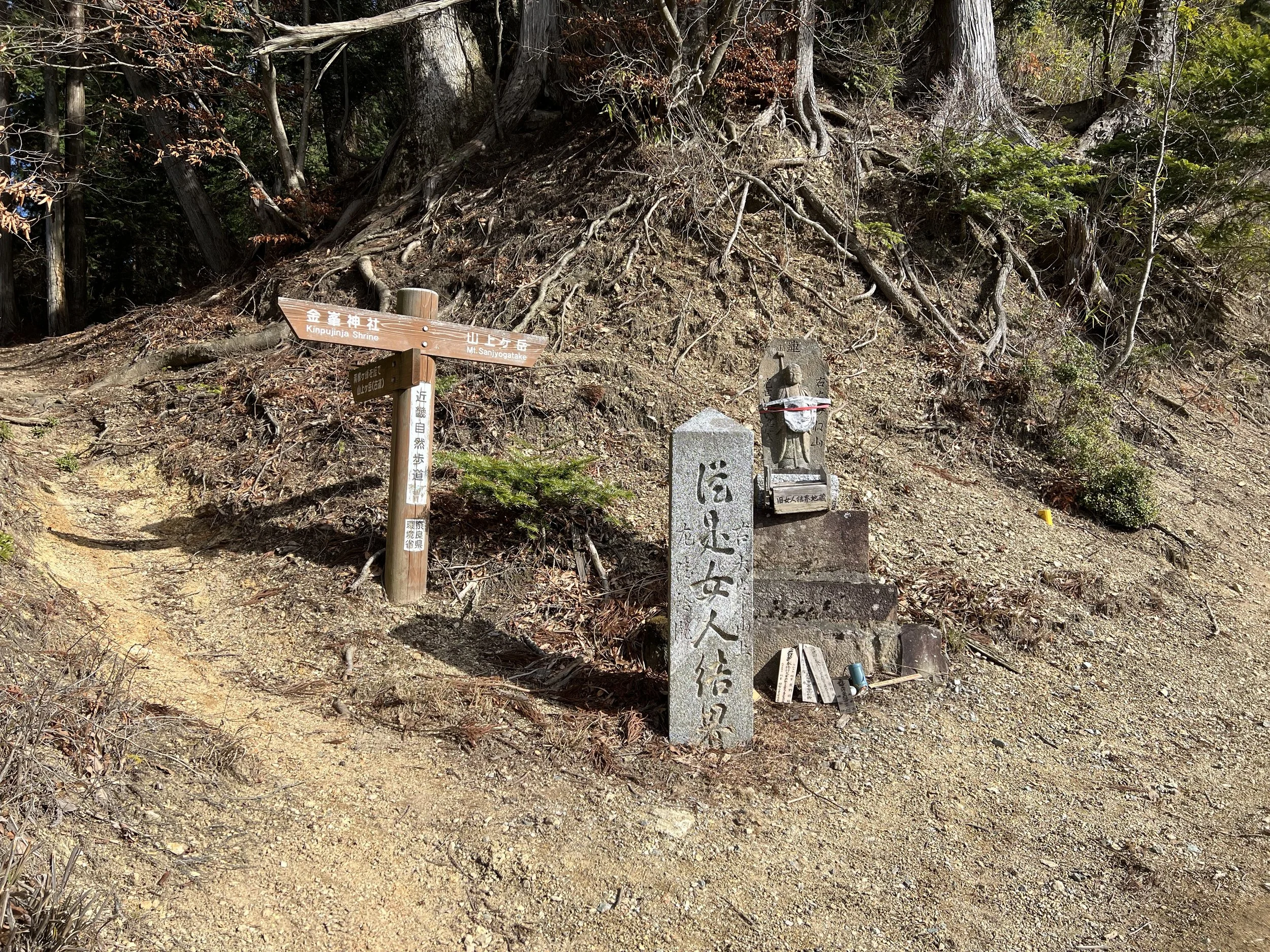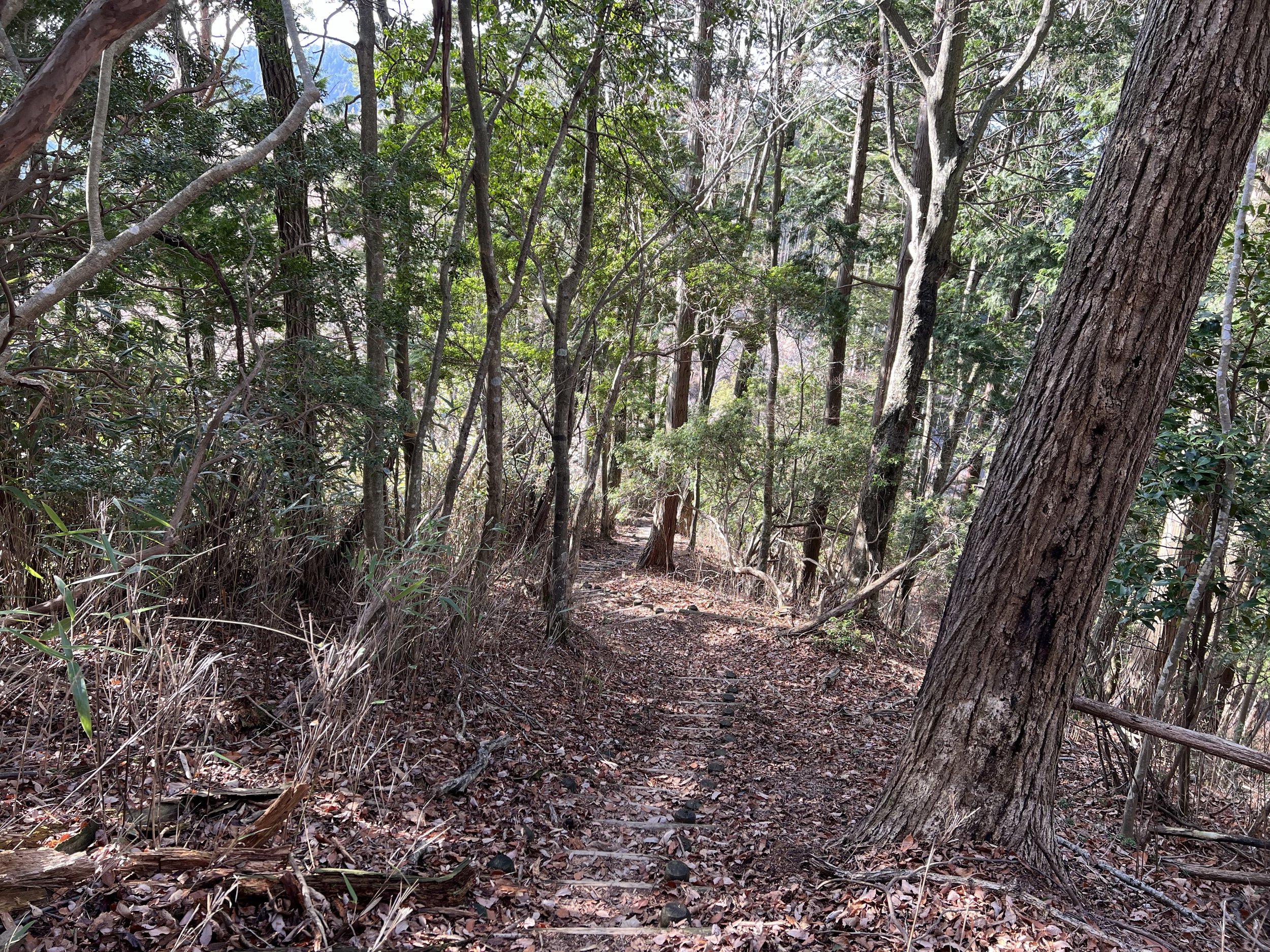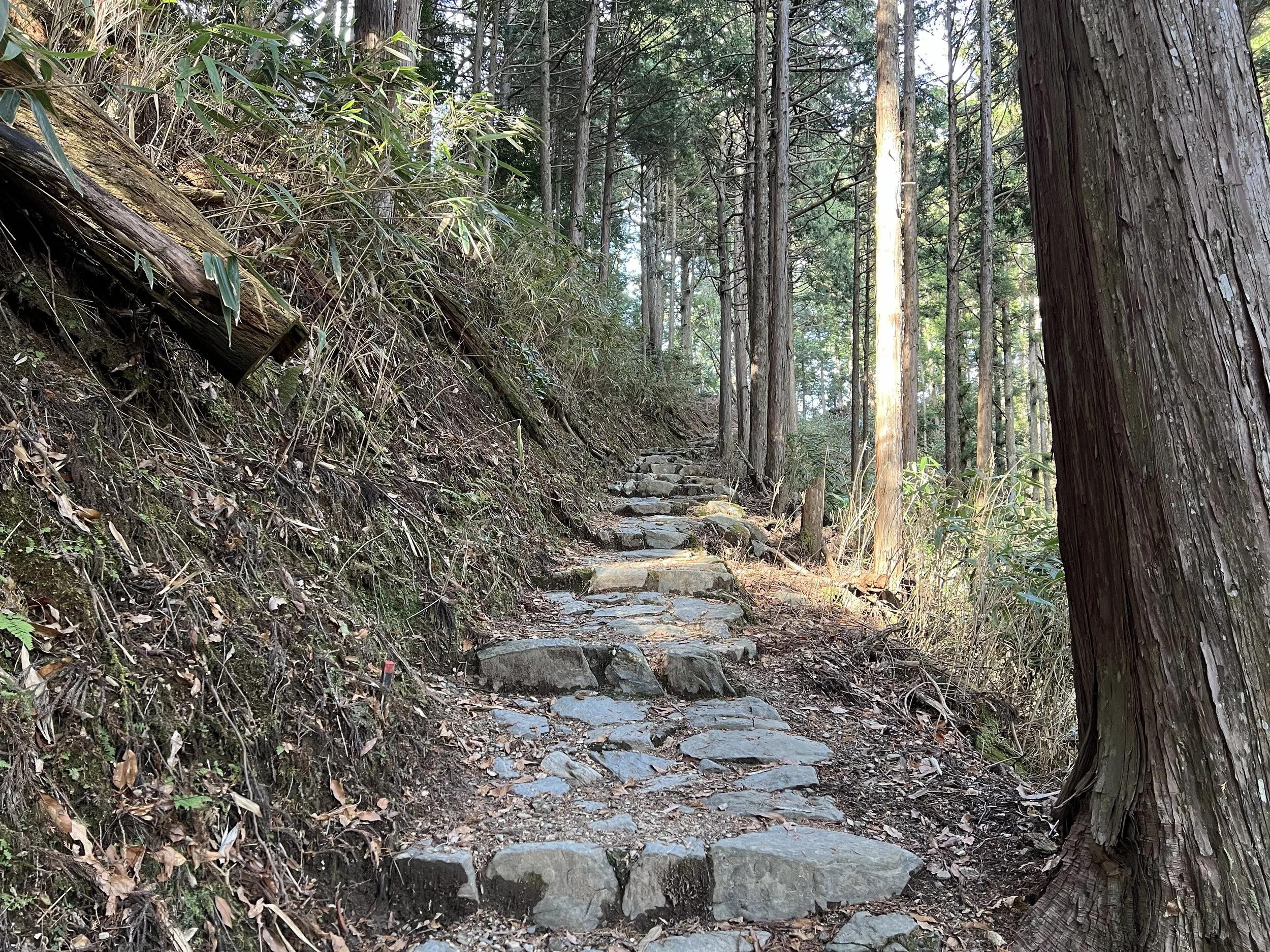Mount Yoshino - Nara, Japan
Mount Yoshino is world-renowned for its cherry blossoms. It’s said that the first tree was planted here over 1,300 years ago, and today, the mountain is home to more than 30,000 cherry trees of various species. There are different viewpoints suitable for all fitness levels, but the higher you climb, the better the views become—as you can see each tier of blossoms cascading down the slopes below. Alongside the cherry trees, the area is also rich in temples and shrines, each with its own history.
I began my hike from Yoshino Station. There’s an option to take a chairlift up the first section, but since I was planning to hike anyway, I decided to go on foot from the station. Although I visited outside of cherry blossom season, there was still a lively crowd, especially near the temples and shrines. With New Year just around the corner, it seemed like many were here for worship and sightseeing. My first stop was Kinpusenji Temple.
Kinpusenji Temple is considered one of the most important temples of Shugendo, a mountain-based faith that blends elements of Buddhism and Shinto. It’s part of the UNESCO World Heritage–listed “Sacred Sites and Pilgrimage Routes in the Kii Mountain Range.” The temple’s main hall, Zao-do, stands an impressive 34 metres tall and is said to be the second-largest wooden structure in Japan after Nara’s Todaiji Temple. The massive wooden pillars and intricate carvings were stunning, though the crowd made it difficult to linger for long. I explored the temple grounds briefly before continuing up the mountain.
My next stop was Yoshimizu Shrine. Originally founded as a temple, it has long served as a refuge for several historic figures throughout Japan’s history. Today, it’s one of the most popular cherry blossom viewpoints in Yoshino, offering an unobstructed vista of the mountain slopes blanketed with trees. After taking a few photos, I moved on. The houses gradually gave way to forest, and I began noticing signs warning of bear sightings—an unexpected reminder that nature still dominates this sacred area.
Eventually, I reached Yoshino Mikumari Jinja, another UNESCO-designated site known for its beautiful layered bark roof, which was renovated in 2011. The architecture here was exquisite, and I took my time appreciating the fine details. Most visitors end their journey here, but I decided to continue farther up toward Mount Aonegamine, the highest peak in the Yoshino range.
The path ahead was paved for much of the way and led me to the Takagiyama Observation Deck. The area opened up suddenly, with clear, panoramic views across the surrounding mountains. A signboard identified the peaks visible in the distance—a perfect rest stop before the next climb.
Further along, I arrived at the Shu-gyo-mon Gate, which translates roughly to “Training Gate.” The name is fitting—the steep incline beyond it was one of the toughest climbs I’ve done so far. After reaching Kinpu Shrine, I paused briefly before continuing through a section of logging land where the forest opened up once again.
When I finally reached the peak of Mount Aonegamine, I couldn’t help but laugh—it was completely enclosed by trees, with no view at all, just a small sign marking the summit. I descended a bit and found a bench nearby, sat down with the bun I had packed, and enjoyed the sweeping mountain views from slightly below the peak. As I descended, the return felt much quicker, and I made it back to Yoshino Station with about twenty minutes to spare before my train. Even without the cherry blossoms, Mount Yoshino was an incredible experience, and I can only imagine how breathtaking it must be when the slopes are in full bloom.
History & Background
Mount Yoshino (吉野山) has been Japan’s most famous cherry blossom viewing spot for centuries. The mountain is divided into four sections—Shimo, Naka, Kami, and Oku Yoshino—each blooming in stages from late March to mid-April, creating a layered effect of pink and white along the ridges. The area also holds deep spiritual significance as a sacred site of Shugendo, a religion rooted in mountain worship that blends Shinto and Buddhist traditions. Many of the temples and shrines here, including Kinpusenji and Yoshino Mikumari Jinja, are part of the UNESCO World Heritage Sites of the Kii Mountain Range.
Getting There
From Osaka or Nara, take the Kintetsu Line to Yoshino Station. From the station, you can either hike up through the town and temples or take the Yoshino Ropeway (Japan’s oldest ropeway) to shorten the ascent. Chairlifts are also available for part of the route. During cherry blossom season, shuttle buses and taxis operate frequently between key viewpoints and shrines, making it easy to explore even without a full hike.
Route Overview
Distance: 17.06 km out & back (Yoshino Station)
Total elevation gain: 843 m
Duration: 4 hr 10 min (with breaks 4 hr 51 min)
Difficulty: Hard
Peaks: Mt Yoshino 吉野山 530m, Mt Takagiyama 高城山 852m, Mt Aonegamine 青根ヶ峰 858m
Cost Breakdown
Train: Sakurai Station → Yoshino Station — ¥710
Food: ¥1,400
